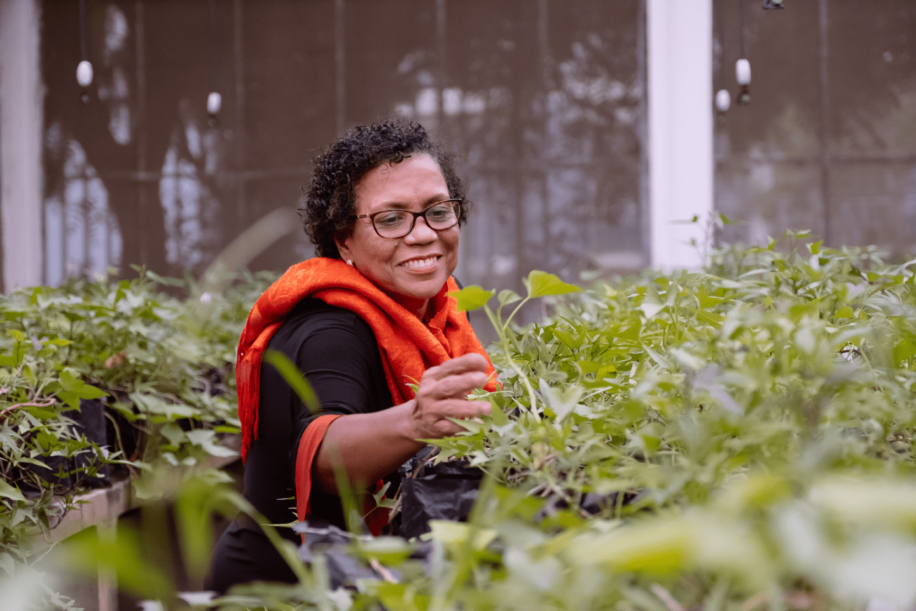Although the number of female farmers is growing, they still face discrimination and a wage disparity that puts them at a disadvantage. In addition, the agriculture industry is a male-dominated field, leading to misogynistic practices. For example, less than 770,000 farms in the U.S. where females are the primary producers and make the day-to-day decisions.
Women in agriculture are often supported by other female farmers but should receive more recognition and support from community members. Since 2016, there has been an increase in the number of women who were awarded degrees in agriculture. Women in agriculture often run side businesses, such as operating a bed and breakfast and selling goods, which boosts their income. Normalizing women in the agriculture industry is important, as it breaks the social stigma and allows them more opportunities to progress.
For Women’s History Month, we want to take some time to recognize the extraordinary contributions that these women have made to shape the industry. Read below to learn some of the powerful women behind agriculture.
Harriet Williams Russell Strong (1844-1926) – Water Conservationist
Harriet Williams Russell Strong was widowed at a young age and left with four daughters and a 220-acre farm to take care of. The farm had been unsuccessful in growing wheat, rye, and barley due to failed attempts in irrigation and drought.
Strong decided to investigate ways to improve irrigation in dry land. She came up with a system that saved water in reservoirs and dams. Her patented inventions inspired the construction of the Hoover Dam.
Strong decided to grow walnuts after everything else had been unsuccessful. Less than five years later, she was the leading grower of walnuts in the country and known as the “Walnut Queen.”
She was a mother, agribusiness-woman, inventor, and relentless activist for women’s rights, all with no formal education.
Mary Engle Pennington (1872-1952) – Food Scientist
Pennington studied chemistry and biology at the University of Pennsylvania, but due to gender discrimination, she was unable to receive a degree. Despite this challenge, she earned a Ph.D. by the age of 22. She then created her own laboratory and joined the USDA’s Bureau of Chemistry, currently known as the Food and Drug Administration, to study bacteria and how to handle raw milk.
After only one year of work, she became the FDA’s first female lab chief. Under her influence, the lab developed safe methods for processing, storing, and shipping meats and animal products, which the food handling industry adopted.
Pennington also patented many inventions that assisted in the transportation and storage of refrigerated and frozen foods. She figured out that maintaining low temperatures would reduce bacteria. With these inventions, she revolutionized food supply and distribution systems.
Alice Evans (1881-1975) – Animal Scientist
Evans found her passion for biology during a two-year course about nature offered to rural teachers from Cornell University. After this program, she completed her bachelor’s degree in bacteriology from the same school and her master’s degree from the University of Wisconsin.
She then started working as a researcher in the USDA’s Dairy Division. Starting out with little knowledge of diseases in raw milk, she worked to learn more about two different bacterias. She discovered that these two bacterias were closely related and could be passed from animals to humans. Evans published her work but was met with skepticism.
She contracted the disease from these bacteria and suffered its effects for over 20 years through her research. The opposition to her discoveries died, and her work inspired the mandatory pasteurization of milk.
Alice Evans is known as the “Pioneer of Safe Milk” After her research career; she continued to lecture young women about career development, especially in scientific fields.
Evangelina Villegas (1924-2017) – Plant Biochemist and Breeder
Evangelina Villegas grew up in Mexico where it was not typical for a woman to aim for higher education at the time, yet she obtained her bachelor’s degree in chemistry and biology. She started her career as a chemist, and after seven years, she started the Wheat Industrial Quality Chemical Laboratory.
Before continuing her research, she pursued her master’s degree in cereal technology and a Ph.D. in cereal chemistry. She was determined to make breakthroughs in the agriculture industry.
Working with other scientists, she studied different cultivation techniques to develop corn with high contents of amino acids. This led to the creation of quality protein maize (QPM). Because this corn is higher in protein than conventional corn, those who ate were healthier and at lower risk of malnutrition disorders.
“The efforts of Dr. Villegas… [has] laid the foundation for what will be one of the most important contributions to food security in human history,” said Timothy Reeves, Former Director General of the International Maize and Wheat Improvement Center (CIMMYT).
Maria Isabel Andrade (1958-Present) – Plant Breeder
Maria Isabel Andrade was born and raised in Cape Verde. Her parents always stressed to her the importance of education, so she pursued her bachelor’s and master’s in plant genetics. She also obtained a Ph.D. in plant breeding and physiology.
Through her studies, she developed a passion for sweet potatoes. She discovered that crops like these have many nutritional benefits, and she believed that they could help malnourished and food insecure people in Africa.
Andrade worked at the International Institute for Tropical Agriculture. Under her leadership, they released nine drought-tolerant varieties of cassava and sweet potatoes. These were distributed to farmers in Mozambique. Throughout her career, she and her team released over 40 more varieties of highly nutritious, drought tolerant crops.
Andrade recognized that tackling food insecurity involved the collaboration of nutritionists and agricultural economists. Since 2006, she has worked at the International Potato Center (CIP). and she is currently addressing government requests for the organization.

